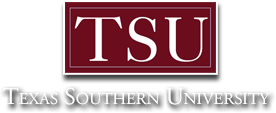- Description
- Objectives
- Outline
- Materials
- System Requirements
- Watch a Demo
Our Child Health, Safety, and Nutrition course explores the role of early childhood educators in fulfilling the nutrition, health and safety needs of young children in their care. This course identifies the professional standards of the field and discusses best practices for applying them in the early care setting. Students will learn how to teach healthy practices and to promote the overall wellness of children. Our Child Health, Safety, and Nutrition course is for anyone who works in a role that touches children's lives. The material is based on the most current research and reflects the latest developments in health, safety and nutrition as well as their application in multiple settings.
Prerequisite(s): None
After completing this course, you should be able to:
- Define the principles of integrating a healthy childhood lifestyle to achieve optimal growth and development
- List the basics of infectious diseases and how they affect health
- Identify the methods for maintaining a safe environment which reduces the risk of injury
- Recall the procedures for assessing social and emotional development of children
- Recognize the standards of nutrition and the process of planning healthy meals
Child Health, Safety and Nutrition Module 1
Children’s Well-Being and Health Observations
- Health, Safety, and Nutrition
- Children’s Growth and Development
- Promoting a Healthy Lifestyle
- Promoting Children’s Health
- Observation as a Screening Tool
- Daily Health Checks
- Family Involvement
- Health Education
Child Health, Safety and Nutrition Module 2
Health Assessments and Special Medical Conditions
- Health Records
- Screening Procedures
- Referrals
- Inclusive Education: Supporting Children’s Success
- Common Chronic Diseases
- Chronic Medical Conditions
Child Health, Safety and Nutrition Module 3
Infectious Process and Childhood Illnesses
- Risk Factors
- Communicable Illness
- Stages of Illness
- Control Measures
- Common Communicable Childhood Illnesses
- Common Acute Childhood Illnesses
Child Health, Safety and Nutrition Module 4
High-Quality Environments and Safety Management
- Identifying High-Quality Programs
- Early Childhood Program Licensure
- Features of High-Quality Programs
- Guidelines for Safe Environments
- Safety Management
- Risk Management
- Implementing Safety Practices
- Emergency and Disaster Preparedness
Child Health, Safety and Nutrition Module 5
Keeping Children Safe
- Responding to Medical Emergencies
- Emergency Care vs. First Aid
- Discipline vs. Punishment
- Abuse and Neglect
- Understanding the Risk Factors for Maltreatment
- Reporting Laws
- Family Involvement in Health and Safety Education
- Teacher Inservice in Health and Safety Education
- Effective Instructional Design
- Activity Plans
Child Health, Safety and Nutrition Module 6
Food and Nutrients: Basic Concepts
- Nutrition Guidelines
- MyPlate
- Food Labels
- Carbohydrates, Fats, and Proteins
- Children and At-Risk Nutrients
- Proteins
- Vitamins and Minerals
- Water and Growth
Child Health, Safety and Nutrition Module 7
Nutrition and the Young Child
- Feeding Infants
- Meeting the Infant’s Nutritional Needs for Growth and Brain Development
- Feeding Time for the Infant
- Introducing Semi-Sold Foods
- Feeding Toddlers, Preschoolers, and School-Age Children
- Challenges of Feeding
- Promoting Healthy Eating Habits
Child Health, Safety and Nutrition Module 8
Developing Menus and Food Safety
- Developing the Menu
- Nutritious Snacks
- Planning the Menu Within Budget
- Food Safety
- Food-Related Illness
- Hazard Analysis and Critical Control Point
- Food-Borne Illnesses
- Rationale for Teaching Children about Nutrition
- Developing Lesson Plans for Nutrition Activities
**Outlines are subject to change, as courses and materials are updated.**
Ed4Career is committed to being both environmentally conscious and making it easier for you to study! We’re making your education mobile! All of our textbooks are now provided as eTextbooks. You can access them on your laptop, tablet, or mobile device and can study anytime, anywhere.
The move away from physical books to eTextbooks means you get the latest, most up-to-date version available. This also makes your training more accessible, so you can study anywhere you have your phone or tablet. The best part is that all materials are included in your training cost so there are NO extra fees for books!
Internet Connection
- Broadband or High-Speed - DSL, Cable, and Wireless Connections
*Dial-Up internet connections will result in a diminished online experience. Classroom pages may load slowly and viewing large audio and video files may not be possible.
Hardware Requirements
- Processor - 2GHz Processor or Higher
- Memory - 1 GB RAM Minimum Recommended
PC Software Requirements
- Operating Systems - Windows 7 or higher
- Microsoft Office 2013 or higher. Also, you could use a general Word Processing application to save and open Microsoft Office formats (.doc, .docx, .xls, .xlsx, .ppt, .pptx)
- Internet Browsers - Google Chrome is highly recommended
- Cookies MUST be enabled
- Pop-ups MUST be allowed (Pop-up Blocker disabled)
- The Kindle Reader App or VitalSource Bookshelf App are needed for many of our courses (No special equipment needed. This can be downloaded for FREE onto your computer.)
- PowerPoint Viewer (if you do not have PowerPoint)
- Adobe PDF Reader
- QuickTime, Windows Media Player &/or Real Player
MAC Software Requirements
- Operating Systems - Mac OS x 10 or higher with Windows
- Mac office programs or a Word Processing application to save and open Microsoft Office formats (.doc, .docx, .xls, .xlsx, .ppt, .pptx)
- Internet Browsers- Google Chrome is highly recommended
- Cookies MUST be enabled
- Pop-ups MUST be allowed (Pop-up Blocker disabled)
- The Kindle Reader App or VitalSource Bookshelf App are needed for many of our courses (No special equipment needed. This can be downloaded for FREE onto your computer.)
- PowerPoint Viewer (if you do not have PowerPoint)
- Adobe PDF Reader
- Apple QuickTime Media Player
